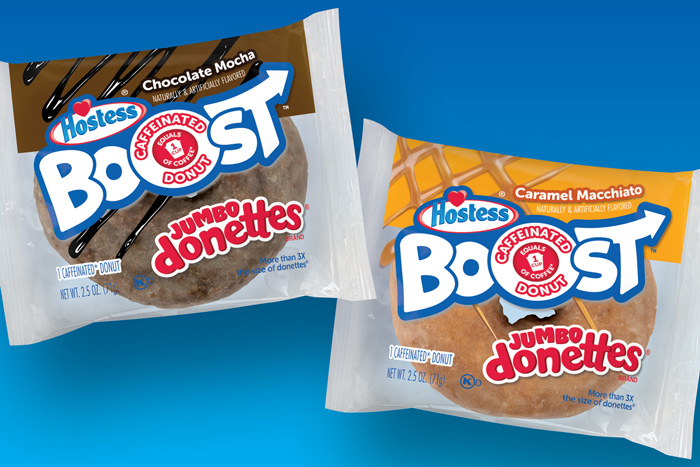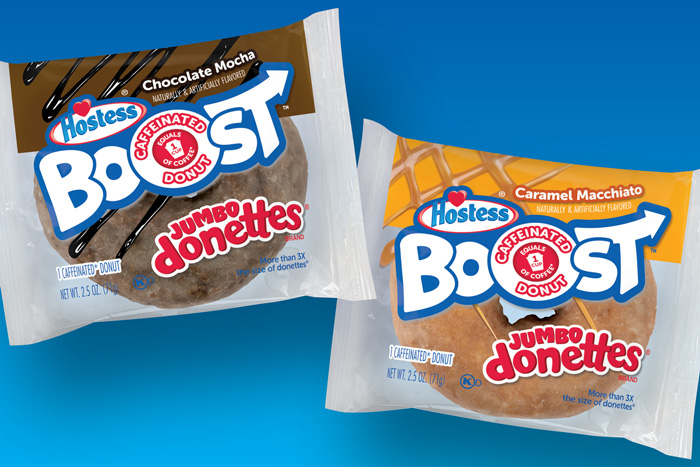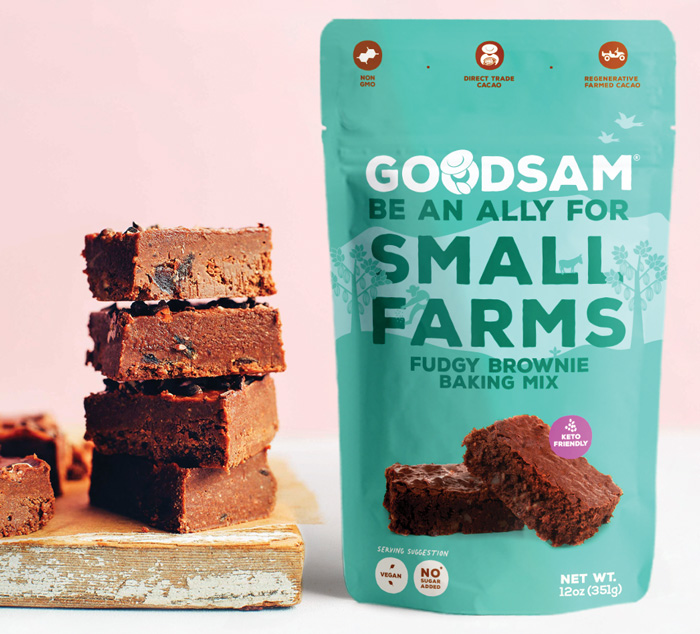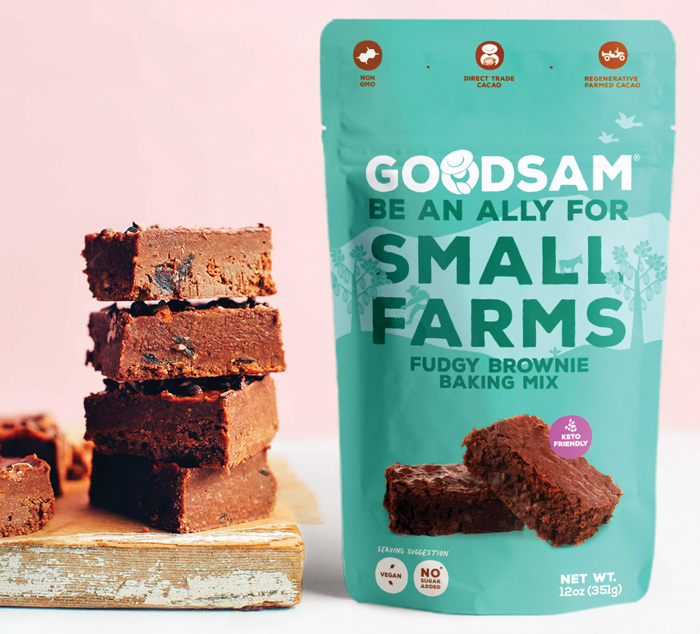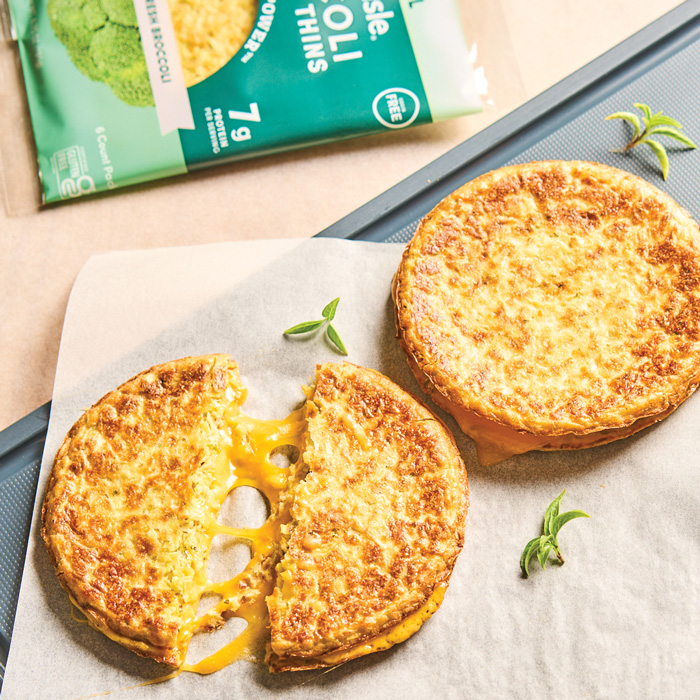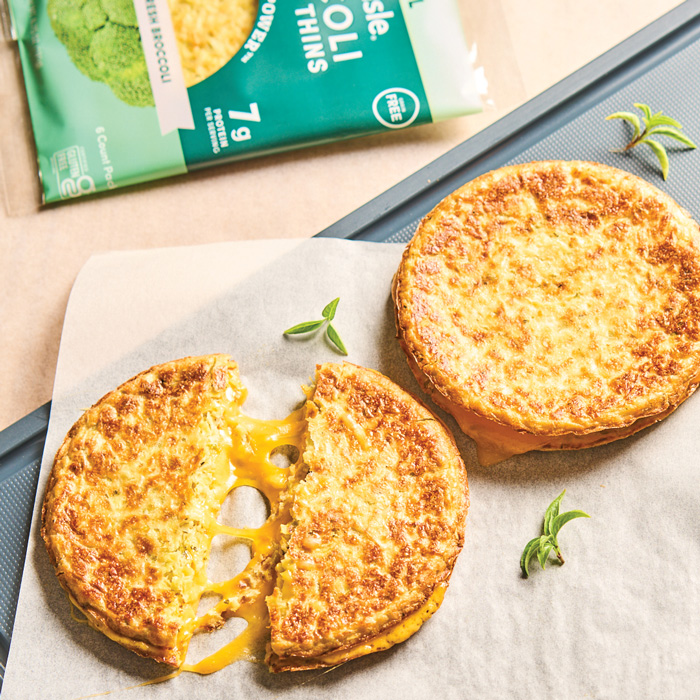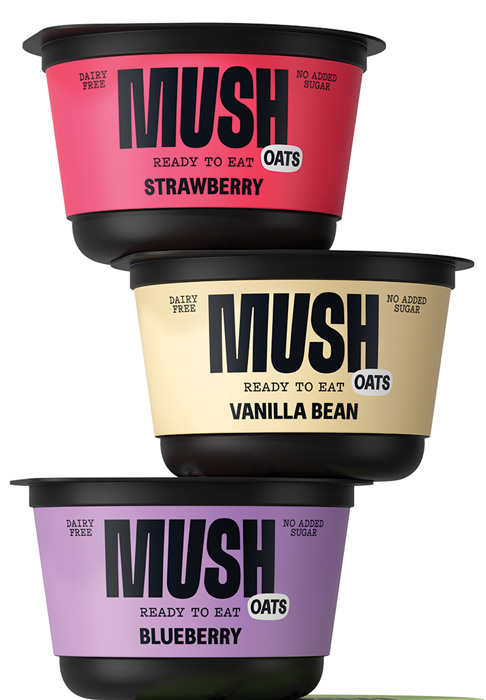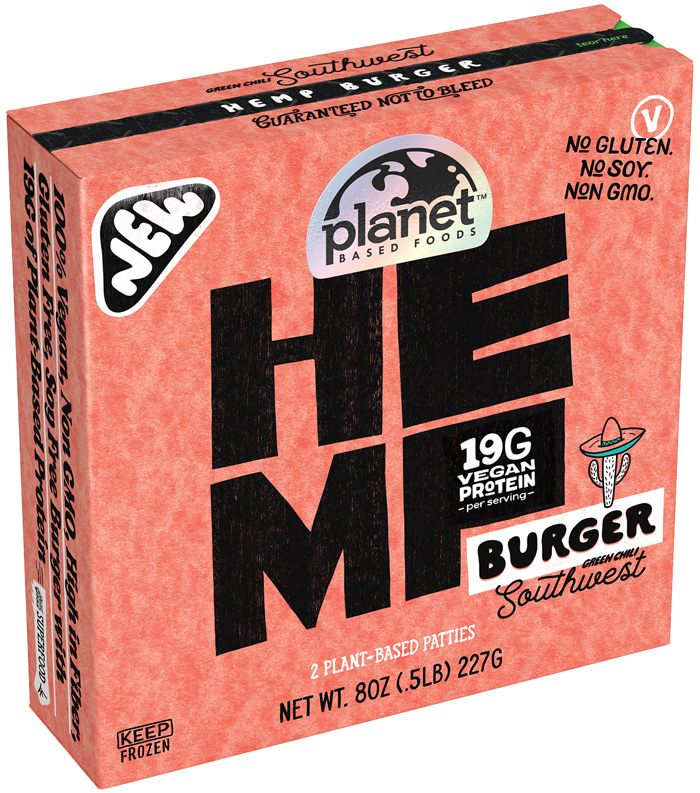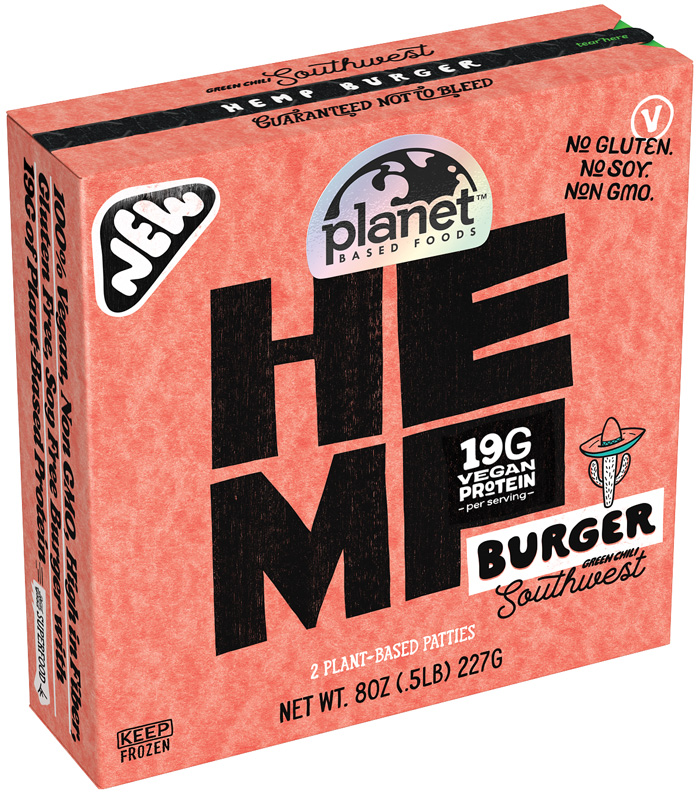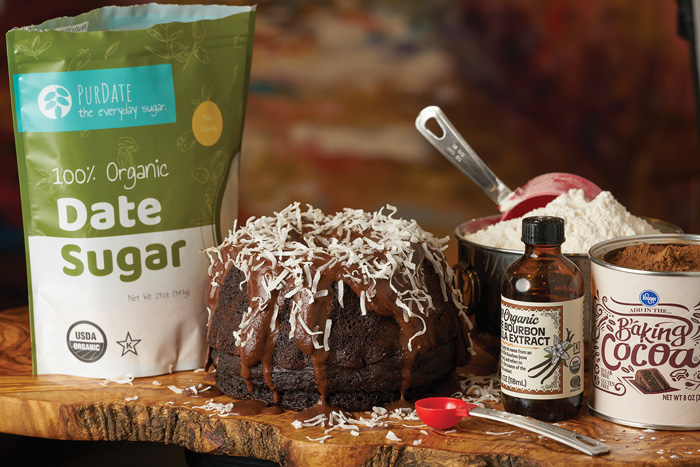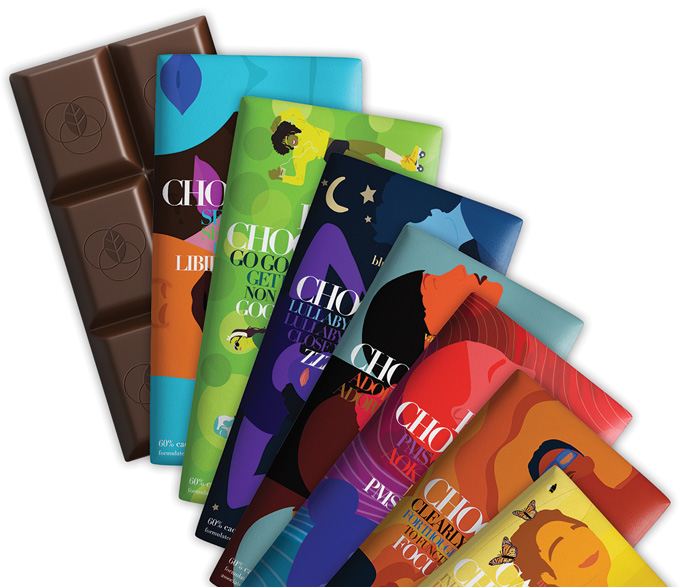
Top 10 Functional Food Trends
Consumers are thinking carefully about the health benefits of the foods they consume. Here’s a look at the factors shaping their choices and driving growth in the functional foods sector.
Article Content
Pandemic-weary consumers are continuing to make health and nutrition a priority, and they’re increasingly turning to functional foods and drinks for help. Nearly two-thirds of U.S. adults say they’re now more focused on their own health than they were a year ago, according to HealthFocus. Among those aged 65-plus, seven out of 10 are more health conscious.
Global sales of fortified/functional foods reached $292 billion in 2021, up from $274 billion in 2020, per Euromonitor. A Kerry survey of consumers in 16 countries found that four in 10 (42%) bought more functional foods last year than in 2020. Nutrition Business Journal put U.S. functional food/drink sales at $83 billion in 2021, up 6.8% versus 2020.
The health benefits a product offers have a significant influence on purchase decisions for six in 10 U.S. food shoppers, according to a 2022 report from FMI—The Food Industry Association. The source of a product’s ingredients influences 56% of consumers, and 51% are influenced by its dietary claims, per FMI.
The future for the functional foods market looks stronger still. Half of U.S. adults say they plan to eat even healthier going forward, FMI reports. Younger consumers (aged 13–39), who are the heaviest users of functional foods and beverages, are most committed to improving both their physical health and mental health in 2022, according to YPulse research. Eating more healthfully is now a top priority for two-thirds (63%) of the 42 million Americans enrolled in the U.S. Department of Agriculture’s Supplemental Nutrition Assistance Program (SNAP), according to an IRI survey of SNAP shoppers.
A February Ipsos poll of consumers in 28 countries found that COVID-19 was the issue they were most worried about, so it’s likely that this concern will keep them focused on eating healthier. HealthFocus reports that half of global consumers have increased their belief in food as medicine over the past two years.
Here’s a breakdown of the top 10 functional food trends that are influencing consumer behavior in 2022.
1. Self-Defense
Consumers are taking a more aggressive and preventive approach to health. More than a quarter (28%) of U.S. adults are avid self-care consumers, according to an IRI and Klein & Co. report; 41% take some daily health-promoting action.
Two-thirds of adults in the United States look for food and drinks with vitamins and minerals, according to The Hartman Group’s Health & Wellness 2021: Reimagining Well-Being Amid COVID-19 report. Kellogg’s Special K cereal fortified with 100% of the Daily Value of vitamins B6, B12, and E, zinc, iron, thiamine, riboflavin, pantothenic acid, niacin, and folate reflects emerging interest in B vitamins, morning energy, and immunity.
Mintel reports that one-quarter of U.S. consumers currently consume functional foods and drinks to support immunity, and the Council for Responsible Nutrition says immunity is second only to general health benefits as a reason for supplement use. Citrus, dark leafy greens, superfruits, broccoli, tea, garlic, nuts, root vegetables, fish, and yogurt are the foods most associated with immunity, per Datassential.
Dollar sales of foods and drinks containing ashwagandha increased by 161% for the year ended Oct. 31, 2021, and sales of products that contain elderberry were up by 141%, per SPINS. Other popular functional ingredients include astragalus, cider vinegar, and mushrooms. The Bolthouse Farms immunity-supporting product suite includes Superfood Immunity Boost Juice and BOLTS Immunity Shots.
Nearly two-thirds of global consumers link the microbiome, probiotics, and digestive health to immunity; more than half associate it with daily energy, mood, and weight management, according to HealthFocus. This suggests that the opportunity for multifunctional foods and drinks will grow. Danone North America’s new Activia+ Multi-Benefit Probiotic Yogurt Drinks are formulated with vitamins linked to immunity support.
2. Fit & Ready
The pandemic has accelerated consumers’ desire to optimize physical and mental performance. Half (54%) of consumers now buy foods and beverages to improve everyday performance versus 40% who purchase products to support athletic performance, according to HealthFocus.
This emerging active lifestyle market, which is characterized by regular exercise, is projected by Nutrition Business Journal to grow from $43 billion in 2021 to $50 billion in 2024. Two-thirds of U.S. adults exercise moderately or strenuously at least three days a week, HealthFocus reports.
Hydration is now the top motivation for functional food and drink purchases globally, followed by gut health, immunity, long-lasting energy, and enhanced everyday performance, Innova Market Insights found in an 11-country survey conducted in 2021.
Sales of foods and beverages with a caffeine claim grew by 25% for the year ended May 16, 2021, per IRI. SPINS data show that electrolyte supplement sales jumped 85% for the year ended Oct. 31, 2021. Del Monte’s Boost Me fresh fruit cups contain coffee extract, and Hostess Brands’ Boost Jumbo Donettes are caffeinated.
Six in 10 consumers seek out protein, according to the International Food Information Council (IFIC). Consumers around the globe most often associate protein with physical energy, muscle tone, and weight management, according to HealthFocus. Digestibility and completeness are emerging protein product differentiators.
One in five supplement users (21%) used a protein supplement in 2021, according to the Council for Responsible Nutrition. More than half (58%) consumed whey protein. The Whey Better Cookie Co. now offers Whey Better Mini Protein Cheesecakes.
Amino acid supplements are posting year-on-year growth of 34%, according to Nutrition Business Journal. The amino acids tryptophan, taurine, and L-theanine are moving into the functional food spotlight. Optimum Nutrition offers Amin.o.Energy + Electrolytes, a sparkling hydration beverage.
Strength training is No. 4 on the list of hot global fitness trends for 2022, according to the American Academy of Sports Medicine’s annual survey. Also high on the list are exercise for weight loss, fitness for older adults, and exercise as medicine.
3. Sustainably Healthy
Adding “ethical” product benefits (e.g., food produced using ethical and humane production methods) that today’s consumers perceive as healthful is a big idea for marketers. Products positioned in this way will appeal to health-conscious consumers. Two-thirds of younger adults feel they have eaten healthier if they have consumed ethically produced fare, per an FMI report.
Free-range, cage-free, and grass-fed meats, poultry, and eggs are considered healthier as well as more humane. Sales of organic, antibiotic-free/hormone-free, and grass-fed meat and poultry accounted for 11.4% of all meat sales, up 18.1% in 2021, FMI reports. Dollar sales of Vital Farms pasture-raised eggs and eggs from the Happy Egg Co., which touts holistic farming practices, jumped 59% and 10%, respectively, for the 12-week period ending Dec. 26, 2021, IRI reports.
Four in 10 consumers believe that sustainable, wild-caught fish/seafood is healthier than other seafood and has a higher protein content. However, 29% prefer farmed fish due to its comparatively higher omega-3 content, according to FMI data.
Regenerative agriculture is very or extremely important to one in five U.S. adults. Four in ten consumers think foods grown with a regenerative agriculture technique that improves soil health have a higher vitamin and mineral content.
Zack’s Mighty Tortilla Chips highlight the fact that the chips are made with “heirloom Flint corn.” Horizon Organic Dairy promotes the ways in which its dairy farmers work to improve the health of the soil in the pastures where their cows graze.
Hydroponic growing is perceived to produce crops that are more nutritious, use less pesticide, and have less environmental impact, according to an FMI produce report. Nature Fresh Farms offers greenhouse vegetables for snackers, including a Mixed Medley of mini on-the-vine tomatoes.
Whole grains use less water than other crops, according to the Oldways Whole Grains Council. Triticale, rye, oats, and barley can deliver nutrients back to the soil. Kernza, teff, einkorn, proso millet, and pearl millet are considered the most sustainable whole grains.
Reducing waste and using byproducts are important sustainability trends. Barry Callebaut launched its Cabosse Naturals ingredient range with ingredients made from upcycling cacao fruit. Dole, Mondelēz, and Del Monte are investing in upcycled products as well.
4. Conditions & Connections
The majority of U.S. consumers (six in 10 households) are turning to food as a tool to manage or treat health conditions, according to Hartman data. Consumers in four in 10 households purchase beverages for that purpose. Members of U.S. households are managing or treating 10 conditions on average, Hartman reports. Nearly three-quarters of Gen Z and millennials versus 44% of Gen X and baby boomers buy foods for specific benefits, per FMI.
Recent American Heart Association (AHA) reports underscore the fact that many risk factors for heart disease—high blood pressure, obesity, and diabetes—are increasingly associated with diseases of the brain, especially Alzheimer’s and dementia, which should make heart health an even higher priority for consumers going forward.
According to the AHA, 122 million U.S. adults have hypertension; 94 million have total cholesterol of 200 mg/dL or higher. The American Diabetes Association reports that 37 million U.S. adults and children have diabetes, with 1.4 million new cases diagnosed annually; 114 million adults have prediabetes.
Sales of foods and beverages with an AHA heart health claim reached $3.4 billion, up 11% for the year ended Oct. 3, 2021. Consumers also are on the lookout for claims related to digestive health, low sodium, fiber content, low fat, and low cholesterol. Good Food Made Simple’s Oat-Based Waffles are a delicious way to help heart health.
Along with mental health issues (see Trend 10), retaining mobility with age, followed by eye health, bone health/strength, oral health, tiredness, cancer, heart disease, and joint issues, are the conditions consumers are very or extremely concerned about, per HealthFocus. Back and neck pain, mood, and cancer are unique to the top 10 worries among those aged 18–29; hypertension and high cholesterol are big worries for those aged 65-plus.
Muscle/strength ranks fifth among the benefits consumers most want from foods/drinks, per IFIC. The World Health Organization now recognizes sarcopenia as a preventable disease that is reversible through nutrition and exercise.
One in five consumers buys functional foods and drinks for their anti-inflammatory benefits; metabolic health is another emerging benefit consumers want from foods, according to Mintel.
Antioxidants, green tea, electrolytes, superfruits, and fiber/prebiotics are the most sought-after ingredients for functional beverages, according to the Hartman wellness report.
5. Weighing In
Weight loss once again tops the list of benefits consumers most want to get from food, according to IFIC.
Forty-five percent of consumers Ipsos surveyed in 30 countries say they are trying to lose weight. Over half (56%) of U.S. households have a member who is trying to do so; one-quarter of consumers view weight loss as an urgent matter, per Hartman. According to 2022 AHA statistics, 42% of U.S. adults and 19% of children aged 2 to 19 are obese.
Weight loss products were the tenth fastest-growing CPG product category in multi-outlet and convenience channels during the first half of 2021, per IRI. ResearchandMarkets projects that the global market for weight loss products and services will climb from $255 billion in 2021 to $377 billion by 2026. China will be one of the fastest-growing markets.
Sales of center-store foods and drinks touting a no-/low-carb claim grew 48% for the two years ended May 16, 2021, per IRI. Sales of products with a keto or Whole30 claim were each up 16%, and sales of products with high protein/Atkins Diet claims grew by 15%.
In 2021, half (48%) of all consumers and two-thirds of Gen Zers and millennials tried a specific eating approach. Plant-based, low-carb, and dairy-free/lactose-free were each tried by 10%; intermittent fasting, 9%; whole foods, Mediterranean, and gluten-free, 8%; Weight Watchers, 7%; keto, DASH, glycemic index diets, 5%; and FODMAP, 4%, according to an FMI report.
In 2022, for the third straight year, U.S. News and World Report’s expert analysis of the 35 most popular diets named the Mediterranean diet as the best diet plan, followed by the DASH and flexitarian diets, which tied for second; Weight Watchers ranked third.
Four in 10 shoppers look for low-sugar claims, 31% seek no added sugar, and low-calorie and low-carb claims each draw the attention of 25% of consumers, per an FMI 2022 report.
Tropicana Light juice beverages with no added sugar have 70% fewer calories than their full juice counterparts. Califia Farms has rolled out a Zero Sugar Oat Milk. Formulated with allulose, Killer Sammies Ice Cream Sandwiches from Killer Creamery make a “zero added sugar” claim.
Healthier sweet treats (“candyceuticals”) and baked goods are another emerging market opportunity. TrüFrü frozen fruit snacks boast a decadent chocolate coating. Smart Baking Co.’s Smartcakes have zero sugar and are gluten-free.
6. The Plant-Based Plateau
High prices, concerns about overprocessing, and a rising demand for natural, whole food alternatives, along with emerging negative perceptions of plant-based protein’s impact on the environment, may well realign the plant-based segment. Consumer avoidance of plant-based protein has doubled since 2019, up to 14%, according to Hartman.
Earlier this year, Maple Leaf Foods, owner of the Lightlife and Field Roast brands, announced it will curtail further expansion into the alternative meat category as a result of sales declines. Beyond Meat reported a downturn in fourth-quarter U.S. sales.
While plant-based meat alternatives posted significant gains in 2019 and 2020, by midyear 2021, IRI/210 Analytics reported that trial, repeat purchases, and sales had leveled off. Buoyed by increased gains in frozen/processed plant-based poultry, dollar sales squeaked up a mere 0.9% for the 12 weeks ended Dec. 26, 2021, versus a year ago, while unit sales fell 5.7%. Sales of plant-based cheese also dropped, per IRI.
At midyear 2021, per IRI, plant-based meat alternatives had a U.S. household penetration of 8.1%. IRI projects that, ultimately, plant-based meat alternatives will be a “nice niche,” similar to organic and grass-fed meat. Currently, two in five U.S. adults consume plant-based foods/beverages intended to mimic animal products daily or weekly, IFIC reports.
One-third of users are most likely to consume plant-based foods at dinner, 27% for breakfast, 18% at lunch, 7% as a morning snack, 6% in the afternoon, and 5% as a dessert, per Cadent Consulting Group.
Handy Seafood’s Plant-based Crabless Cakes deliver 10 grams of pea/wheat protein per serving. The Tattooed Chef has introduced a frozen plant-based Cauliflower Pizza Bowl.
Eclipse has expanded its frozen plant-based desserts using corn, potato, oats, and cassava ingredients. So Delicious Dairy Free offers yogurt made with coconut milk and botanical extracts.
Half of plant-based consumers are interested in using more nuts/seeds as a protein source; 43%, more legumes; 42%, more grains; and 16%, more tofu/tempeh, according to HealthFocus. Big Mountain Foods captures the power of fermented foods with soy-free Superfood Fava Tofu made from 100% fava beans; it delivers 45% more protein than leading tofu brands.
Plant-based milks are performing very well; oat milk is now second only to almond milk in sales, per IRI. True nutritional parity for animal product alternatives is essential, especially for companies interested in entering the children’s food market. NotCo’s plant-based NotMilk is an excellent source of calcium and vitamins D and B12 and a good source of potassium.
Energy, weight management, and heart health are among the reasons consumers cite for opting for plant-based fare, according to HealthFocus. Some worry that a plant-based meal won’t supply adequate protein, or they’ll feel hungry after eating it, so addressing such concerns is an important marketing strategy to help encourage consumption of plant-based food, according to Datassential.
7. Alternatively Clean
Consumers are increasingly seeking out food/beverage formulations that help them avoid unwanted ingredients, ensure minimal processing, and protect against real or perceived allergens, FMI reports. Ingredients are the first information shoppers look for on the label when they are buying a new food or drink.
More than half of consumers are extremely concerned about avoiding pesticides, per HealthFocus. Other top concerns include growth hormones/antibiotics, high fructose corn syrup, and artificial sweeteners.
Six in 10 consumers watch for products that are non-GMO verified. One-third buy organic to avoid GMOs, says Hartman. In addition, one in five shoppers is extremely or very concerned about the gluten content of food. SPINS reports that across all outlets, sales of organic foods and drinks that are also labeled gluten-free grew by 16% for the year ended Oct. 3, 2021.
Once Again Sunflower Seed Butter Graham Cracker Sandwiches are gluten-free. Grain-free Hummii Mini Muffins are made with chickpea flour, flaxseed, prebiotic fiber, and monk fruit. Blake’s Seed-Based Rice Krispy treats are made from flax, pumpkin, and sunflower seeds.
Food Allergy Research & Education experts estimate that 32 million Americans have food allergies; that’s 11% of U.S. adults and nearly 8% of children. So it’s not surprising that IFIC found that one in five consumers cite the presence of allergens among their top food safety issues.
Foods that are free of all nine allergens, such as Partake cookies and baking mixes, are grabbing customer attention. Naera Icelandic Cheese Snacks from Responsible Foods are free of gluten, nuts, lactose, hormones, antibiotics, and wheat.
Hershey’s a2 Chocolate Milk is well suited for those who suffer stomach upsets from milk and delivers 8 grams of protein per serving. Lactose-free Chobani Ultra-Filtered Milk is an excellent source of protein and calcium and contains all nine amino acids.
8. Functional Cooking
With nearly half of U.S. consumers cooking more meals at home than they did a year ago, products, ingredients, and recipes that make healthy food preparation easier are in demand, according to FMI.
Mintel reports that four in 10 consumers in Germany, France, Italy, and Spain want more recipes tailored to specific health benefits, such as weight loss or lowering cholesterol.
The PAM cooking spray lineup includes an avocado oil version. Wok of Life “plant powered” Asian cooking sauces are sugar-free. McCormick’s new Six Taste and Warming Blend spice mixtures are inspired by Ayurvedic medicine. Bragg flavored nutritional yeast delivers protein and B vitamins. The Ocean’s Balance seaweed-based unsalted seasoning blend line includes a Chili Lime variety.
Claims related to real ingredients, kosher, fresh frozen, 100% natural, and no antibiotics/no hormones are driving frozen food sales, according to the American Frozen Food Institute. Seven in 10 users want more entrées that prominently feature fruits and vegetables; more than half seek more vegetarian entrées and veggie-based carb alternatives. Interest in blended meat/vegetable items outpaces interest in meat alternatives (52% versus 43%), according to the American Frozen Food Institute.
The line of PuraVida chef-created, vegetable-based sides includes a Fire Roasted Brussel Sprouts & Uncured Bacon option. Cool Beans frozen handheld plant-based wraps feature a Sesame Ginger variety.
Consumers view Mediterranean and Japanese cuisines as the healthiest, according to Datassential.
9. Mainstream Niches
Functional foods are starting to mainstream onto restaurant menus. American Culinary Federation (ACF) chefs surveyed by the National Restaurant Association put immunity-boosting snacks at No. 5 on the list of top culinary trends for 2022. Immune-boosting and functional ingredients came in seventh on the list, plant-based sandwiches were eighth, and alternative sweeteners were tenth.
Nut milks topped the list of trendy nonalcoholic beverages for 2022; CBD-infused drinks were third, per the ACF chefs. Reduced-sugar menu items ranked third in the snack category. Plant-based sandwiches/burgers were the top 2022 dinner and lunch trend.
Papa John’s is testing a gluten-free pizza. Noodles & Co. offers a low-carb linguini with 56% fewer net carbs and 44% more protein. Pret A Manger has introduced a plant-based meatball sandwich wrap.
According to Datassential, CBD mentions on menus have grown by 1,248% over the past four years; MCT oil mentions were up by 699%; collagen, +349%; bone broth, +274%; lion’s mane mushrooms, +249%; turmeric, +129%; and raw honey, +112%.
Innova Market Insights reports that 17% of all global new food and beverage launches with functional ingredients were for babies and toddlers last year. Clover Sonoma offers an organic whole milk formulated with DHA and choline and a lactose-free organic whole milk under its Clover the Rainbow line for kids.
Pet owners seek functional benefits for their canine and feline family members. Formulations that are grain-free, high in protein, and vitamin fortified drove pet food sales growth for the year ended May 16, 2021, per IRI. Sales of pet supplements are fast approaching $1 billion, according to Packaged Facts; CBD pet supplements alone have reached $100 million. For dogs, supplements to promote mobility/joint function, healthy skin or coat, immunity, dental health, heart health, stress/anxiety reduction, and digestion are the most frequently purchased. For cats, the leading supplements are for joint, skin, and immunity benefits.
10. Inside Out
The COVID-19 pandemic put mental and emotional health issues in the spotlight. In more than half of U.S. households (53%), treating or trying to prevent anxiety or stress is a concern, according to Hartman; depression is an issue in 44% of households. HealthFocus reports that mood swings and irritability are emerging problems among those aged 18–29.
In addition, four in 10 U.S. consumers are actively working to manage their cognitive health, according to Hartman research. Retaining mental sharpness with aging is second only to COVID-19 among the health concerns Americans are extremely or very concerned about, Hartman says. Also among the top concerns, according to HealthFocus, are memory, stress, tiredness/lack of energy, and lack of mental sharpness/focus.
A quarter of consumers turn to functional foods for their calming/relaxation benefits, Mintel reports. Kerry research shows that cherry blossom, elderflower, jasmine, and vanilla are associated with feelings of peacefulness.
As its name might suggest, The Functional Chocolate Company offers products formulated with nutraceutical ingredients designed to deliver benefits from sleep promotion to energy boosting. The Odyssey Elixir brand combines adaptogenic mushrooms with ingredients like chai, rose hips, and rooibos to deliver beverages that “provide holistic support for the body and mind,” the company says.
For the year ending Oct. 31, 2021, SPINS reports that sales of ashwagandha supplements shot up by 166%; other strong performers include nootropics, adaptogens, and melatonin. CBD supplements sales fell by 31%. Melatonin, magnesium, lavender, and valerian are among the most popular sleep supplements.
Liver, kidney, eye, and respiratory/lung health are among the conditions getting increased attention as consumers continue to embrace the value of detoxification and seek to combat the negative effects of pollution. Two-thirds say a healthy environment is extremely or very important to their overall health, according to HealthFocus.
References
ACSM. 2021. Worldwide Survey of Fitness Trends for 2022. American College of Sports Medicine, Indianapolis. acsm.org.
ADA. 2022. Statistics. American Diabetes Assoc., Arlington, Va. diabetes.org.
AHA. 2022. Heart Disease and Stroke Statistics—2020. American Heart Assoc., Dallas. heart.org.
AHA. 2022. “What’s good for the heart is good for the brain.” Press release, Jan. 26.
AFFI. 2021. The Power of Frozen in Retail. American Frozen Food Institute, Arlington, Va. affi.org.
Cadent. 2021. Plant-based Food Survey. Cadent Consulting Group, Wilton. Conn. cadentcg.com.
CRN. 2021. Consumer Survey on Dietary Supplements. Council on Responsible Nutrition, Washington, D.C. crnusa.org.
Datassential. 2022. MenuTrends. Datassential, Los Angeles. datasssential.com.
Euromonitor. 2021. Voice of the Consumer Health and Nutrition Survey. Euromonitor Intl., London. euromonitor.com.
Euromonitor. 2022. Passport: Health & Wellness.
FMI. 2021. The Power of Health and Wellness in the Food Industry. FMI—The Food Industry Association, Alexandria, Va. fmi.org.
FMI 2021. The Power of Seafood.
FMI. 2021. The Power of Meat.
FMI. 2022. Transparency in an Evolving Omnichannel World.
Hartman. 2021. Health & Wellness 2021: Reimagining Wellness Amid COVID-19. The Hartman Group, Bellevue, Wash. hartman-group.com.
Hartman. 2022. At the Dining Table.
HealthFocus. 2021. USA Consumer Survey. HealthFocus Intl., St. Petersburg, Fla. healthfocus.com.
HealthFocus. 2021. Global Consumer Survey.
IFIC. 2021. Food & Health Survey. International Food Information Council, Washington, D.C. foodinsight.org.
IFIC. 2021. Consumption Trends, Preferred Names and Perceptions of Plant-Based Meat Alternatives.
IFIC. 2022. Consumer Perspectives on Regenerative Agriculture.
Innova. 2020. Innova Market Insights, Arnhem, the Netherlands. innovadatabase.com.
Ipsos. 2021. The Future of Fats, Sugar, and the Obesity Crisis. Ipsos, Paris. Ipsos.com
Ipsos. 2022. What Worries the World?
IRI. 2021. “Making Center Store Stick.” Webcast, July 23. IRI Worldwide, Chicago. iriworlwide.com.
IRI. 2021. “Winning Strategies for Reaching SNAP Shoppers.” Webcast, Oct. 26.
IRI. 2022. “Winning Breakfast, Generation by Generation.” Webcast, Feb.1.
IRI. 2022. “Top Dairy Trends.” Jan. 13.
IRI/Kline. 2021. Consumer Healthcare Explosion. IRI and Kline & Company, Parsippany, N.J. klinegroup.com.
Kerry. 2021. ProActive Health Division Global Survey. Kerry, Beloit, Wis. kerry.com.
Kerry. 2021. Botanical State of Mind.
Lummus, D. 2022. “State of the Industry Report: How Will Independent Pet Specialty Retailers Fare?” Pet Product News, Jan. 19. petproductnews.com.
Lyons Wyatt, S. 2021. “The Snacking Frenzy in 2021 & Beyond.” Webcast, April 1.
Mintel. 2022. Setting the Right Goals for Flavor Innovation in 2022. Mintel Intl., Chicago. mintel.com.
NRA. 2021. What’s Hot 2022 Culinary Forecast. National Restaurant Assoc., Washington, D.C. restaurant.org.
Nutrition Business Journal Database. 2021. Nutrition Business Journal. newhope360.com.
Oldways. 2020. “The Quest for the Most Sustainable Grain.” Press release, Nov. 18. Oldways Whole Grains Council, Boston. oldwayspt.org.
Packaged Facts. 2021. Pet Supplements. Packaged Facts, Rockville, Md. packgedfacts.com.
Packaged Facts. 2022. Children’s Food and Beverage Trends and Opportunities.
Pollock. 2021. What’s Trending in Nutrition: 2022. Pollock Communications, New York, N.Y. pollockpr.com.
ResearchandMarkets. 2021. Global Infant Formula Market 2021–2025. ResearchandMarkets, Dublin. reasearchandmarkets.com.
ResearchandMarkets. 2021. Global Weight Loss Products and Services Market 2021–2026.
SPINS. 2021. “2022 Biggest Health & Wellness Trends.” SPINS, Chicago. spins.com.
YPulse. 2021. Cooking and Diets. YPulse, New York, N.Y. ypulse.com.
Key Takeaways
- Mounting consumer interest in self-care and disease prevention is fueling unprecedented functional food and beverage market growth.
- Recent reports linking cardiovascular issues to diseases of the brain, including Alzheimer’s disease and dementia, underscore the importance of preventing heart disease.
- Functional foods are becoming mainstream additions to restaurant menus.
- With consumers cooking more from home, products that make healthy meal prep easier are in high demand.



